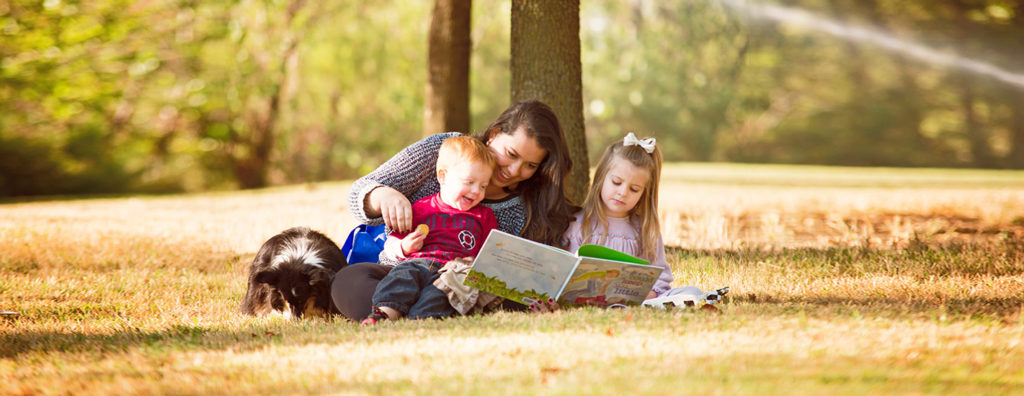This week’s Camp Au Pair theme is Dinosaurs.
Crafts, recipes, activities, and games related to dinosaurs can all be found here on the Camp Au Pair – Dinosaurs pinboard.
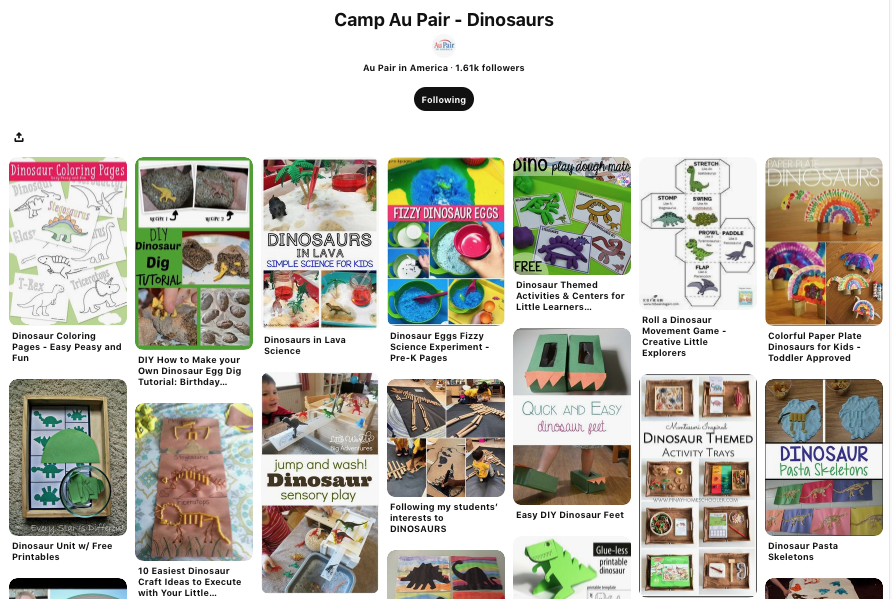
Field Trips can be a great way for kids to learn and have new experiences. Get permission from your host parents before any outings and be sure to take all social distancing precautions.
Local Field Trips:
- Laurel Dinosaur Park
- Maryland Science Center has a Dinosaur Mysteries exhibit.
- National Museum of Natural History in DC
- Calvert Cliffs State Park & Flag Ponds Nature Park both offer a chance for kids to search for fossils and shark teeth.
- Calvert Marine Museum has paleontology exhibits and you can even watch fossil preparers at work.
Virtual Field Trips:
- American Museum of Natural History Virtual Field Trip
- La Brea Tar Pits
- Melbourne Museum Virtual Dinosaur Walk
- Smithsonian Natural History Museum Virtual Tour
Toys – Many kids have dinosaur toys already. See what your kids have and think of fun, new ways you can play with these toys with them. Imagine taking a plastic dinosaur and making footprints in play dough to form your own fossils.
Webcam – This NPS Paleontology Lab offers a webcam where you can watch paleontologists remove rock from around fossils. The cam is normally working 9 am-5 pm PST, so 12-8 pm our time.
Videos – Look for fun videos on YouTube about dinosaurs and fossils. Here are a few to get you started.
Movies – The Good Dinosaur, Land Before Time, and Ice Age are all great family movies that fit with this theme. For older kids, consider movies like Journey to the Center of the Earth and Jurassic Park (which is rated PG-13).
Books – Check your kids’ bookshelf for books on dinosaurs.
Photo: krojotak.com


 This week’s Camp Au Pair theme is
This week’s Camp Au Pair theme is 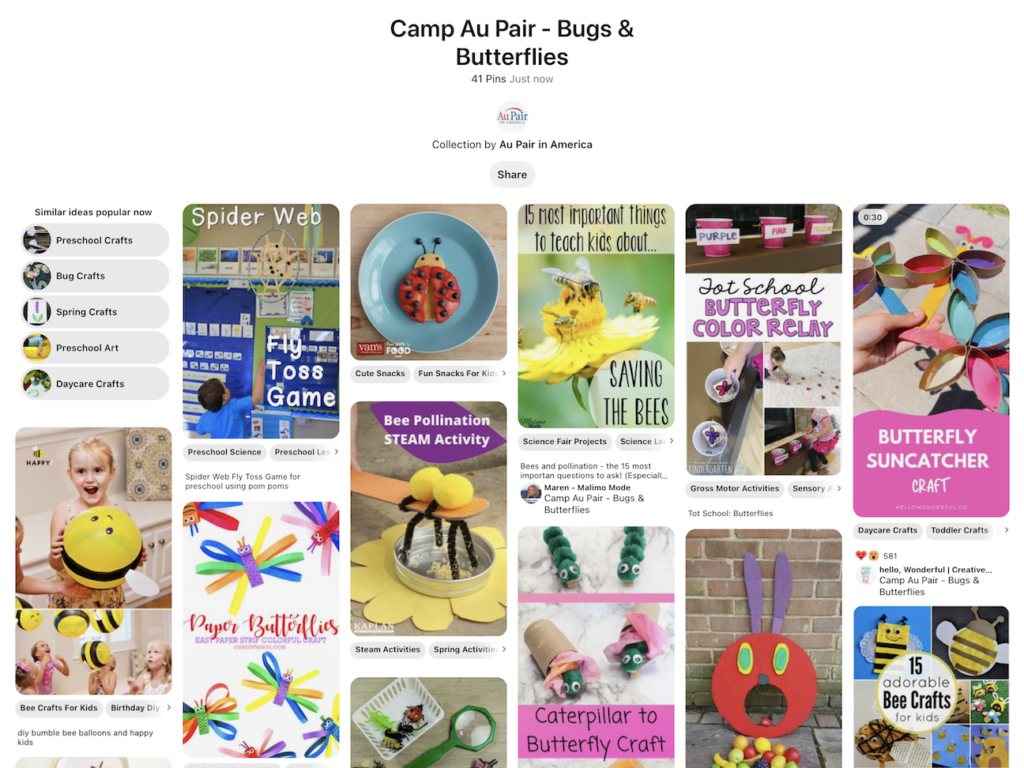

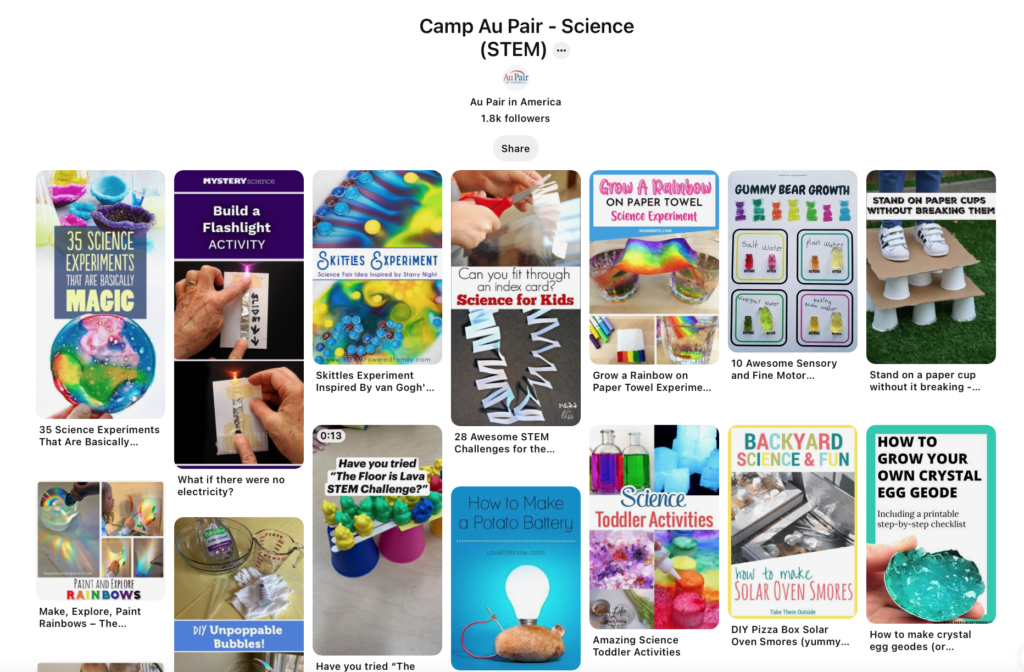

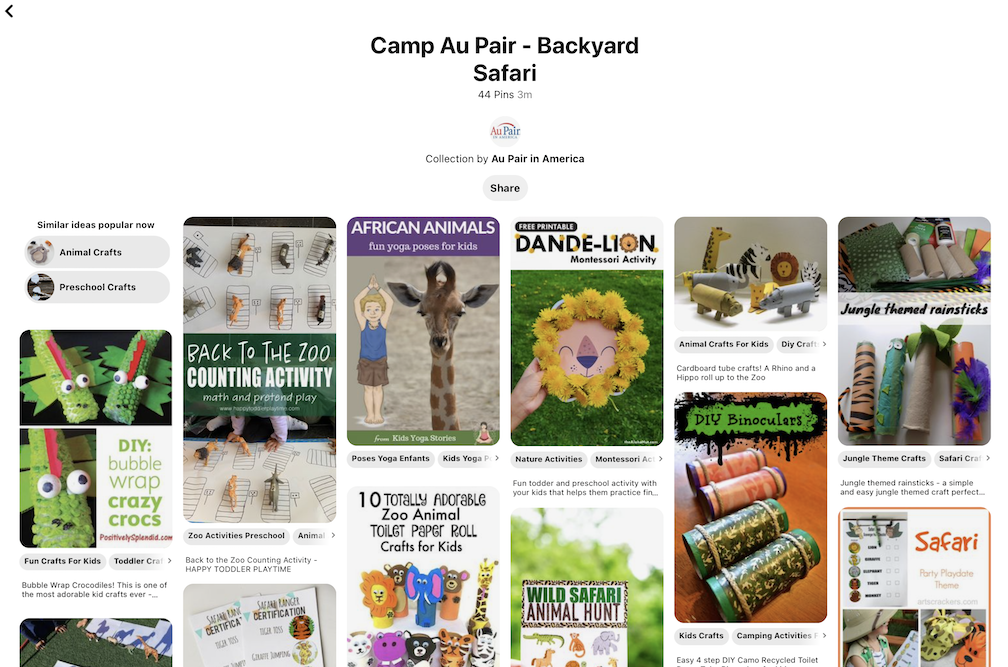
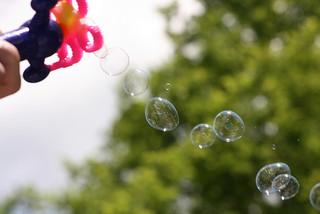 When the kids are out of school on summer break there are soooo many possibilities. But, if you don’t make plans, you will often end up in the house with bored kids getting into trouble and arguing with their siblings. Make plans!
When the kids are out of school on summer break there are soooo many possibilities. But, if you don’t make plans, you will often end up in the house with bored kids getting into trouble and arguing with their siblings. Make plans!
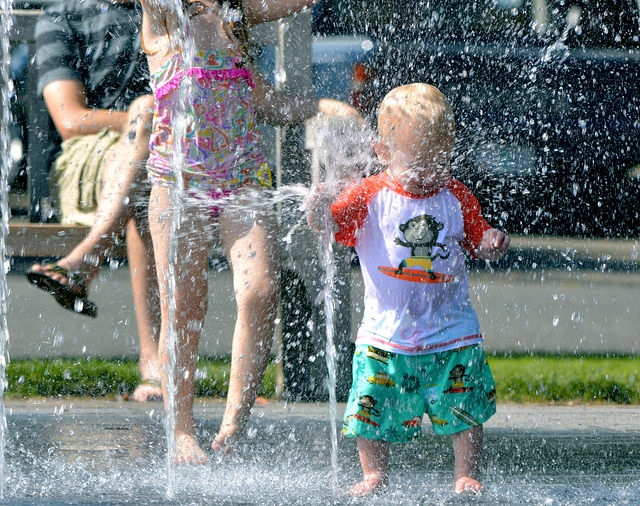
 Places like the DMV and Social Security office can be challenging for Americans, so I can understand how difficult it could be for an au pair to run into problems there.
Places like the DMV and Social Security office can be challenging for Americans, so I can understand how difficult it could be for an au pair to run into problems there.